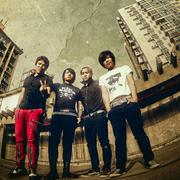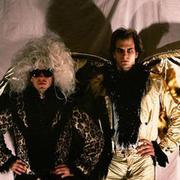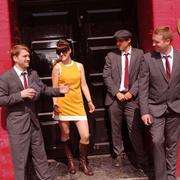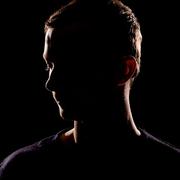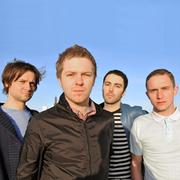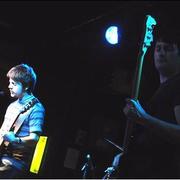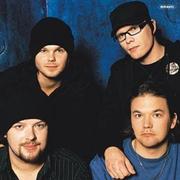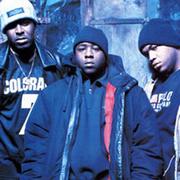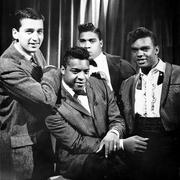The Damned
| 基本信息 | |||
|---|---|---|---|
| 姓名 | The Damned | 别名 | 暂无 |
| 国籍 | 欧美 | 出生地 | |
| 语言 | 性别 | 组合 | |
| 生日 | 星座 | ||
| 身高 | 体重 | ||
by Ned RaggettAs punks history enters a new millennium, the impact of the band initially judged the least likely to seems to grow ever more each day. The Ramones hold deserved pride of place for kick-starting the whole thing, while the Sex Pistols and to a lesser extent the Clash helped take it to an even more notorious level, role models for many young bands to this day. But arguably just as important and memorable were the Damned, London contemporaries of the Pistols and Clash that made their own mark from the start. Eschewing political posing, ill-fitting outside rhetoric, and simply doing the same thing over and over again, the group — lacking anything like a stable lineup — took punks simplicity and promise as a starting point and ran with it. The end result, at the groups finest: a series of inspired, ambitious albums and amazing live shows combining full-on rock energy, a stylish sense of performance, and humorous deadpan cool. Not necessarily what anyone would have thought when Ray Burns and Chris Millar met in 1974 when both ended up working backstage at the Croydon Fairfield Hall.Burns and Millar — more famously known in later years as guitarist/singer Captain Sensible and manic drummer Rat Scabies — kept in touch as both struggled in the stultifying mid-70s London scene. Things picked up when Scabies talked his way into a rehearsal with London SS, the shifting lineup ground zero of U.K. punk that nearly everybody seemed to belong to at one point or another. There he met guitarist Brian James, while in a separate venture overseen by Malcolm McLaren, casting about for his own particular group to oversee, Scabies first met theatrical singer Dave Vanian, still working through his New York Dolls/Alice Cooper obsession. Vanians own history allegedly included singing I Love the Dead and Dead Babies while working as a gravedigger, but whatever the background, he proved to be a perfect frontman. Scabies put Sensible in touch with Vanian and James and the Damned were born, with Sensible switching over to bass while James handled guitar and songwriting.Though the Sex Pistols became the most publicized of all the original London punk groups, forming and playing before everyone else, the Damned actually ended up scoring most of the firsts on its own, notably the first U.K. punk single — New Rose — in 1976 and the first album, Damned Damned Damned, the following year. Produced by Nick Lowe, both were clipped, direct explosions of sheer energy, sometimes rude but never less than entertaining. The group ended up sacked from the Pistols cancellation-plagued full U.K. tour after only one show, but rebounded with a opening slot on the final T. Rex tour, while further tweaking everyone elses noses by being the first U.K. act to take punk back to America via a New York jaunt. Things started to get fairly shaky after that, however, with Lu Edmonds drafted in on second guitar and plans for the groups second album, Music for Pleasure, not succeeding as hoped for. The members wanted legendary rock burnout Syd Barrett to produce, but had to settle for his Pink Floyd bandmate Nick Mason. The indifferent results and other pressures convinced Scabies to call it a day, and while future Culture Club drummer Jon Moss was drafted in to cover, the group wrapped it up in early 1978.Or so it seemed; after various go-nowhere ventures (Sensible tried the retro-psych King, Vanian temporarily joined glam-too-late oddballs the Doctors of Madness), all the original members save James realized they still enjoyed working together. Settling the legal rights to the name after some shows incognito in late 1978, the group, now with Sensible playing lead guitar (and also the first U.K. punk band to reunite), embarked on its most successful all-around period. With a series of bassists — first ex-Saints member Algy Ward, then Eddie and the Hot Rods refugee Paul Gray and finally Bryn Merrick — the Damned proceeded to make a run of stone-cold classic albums and singles. Thered be plenty of low points amidst the highs, to be sure, but its hard to argue with the results. Vanians smart crooning and spooky theatricality ended up more or less founding goth rock inadvertently (with nearly all his clones forgetting what he always kept around — an open sense of humor). Sensible, meanwhile, turned out to be an even better guitarist than James, a master of tight riffs and instantly memorable melodies and, when needed, a darn good keyboardist, while Scabies ghost-of-Keith Moon drumming was some of the most entertaining yet technically sharp work on that front in years.The one-two punch of Machine Gun Etiquette, the 1979 reunion record, and the following years The Black Album demonstrated the bands staying power well, packed with such legendary singles as the intentionally ridiculous Love Song, the anthemic Smash It Up, and Wait for the Blackout and the catchy Satanism (if you will) of I Just Cant Be Happy Today. On the live front, the Damned were unstoppable, riding out punks supposed death with a series of fiery performances laden with both great playing and notable antics, from Sensibles penchant for clothes-shedding to Vanians eye for horror style and performance. 1982s Strawberries found the Damned creating another generally fine release, but to less public acclaim than Sensibles solo work, the guitarist having surprisingly found himself a number one star with a version of Happy Talk from South Pacific. While the dual career lasted for a year or two more, the Damned found themselves starting to fracture again with little more than a hardcore fan base supporting the group work — Sensible finally left in mid-1984 after disputes over band support staff hirings and firings. Second guitarist Roman Jugg, having joined some time previously, stepped to the lead and the band continued on.To everyones surprise, not only did the Damned bounce back, they did so in a very public way — first by ending up on a major label, MCA, who issued Phantasmagoria in 1985, then scoring a massive U.K. hit via a cover of Eloise, a melodramatic 60s smash for Barry Ryan. It was vindication on a commercial level a decade after having first started, but the Anything album in 1986, flashes of inspiration aside, felt far more anonymous in comparison, the bands worst since Music for Pleasure. After a full career retrospective release, The Light at the End of the Tunnel, the band undertook a variety of farewell tours, including dates with both Sensible and James joining the then-current quartet. The end of 1989 brought a final We Really Must Be Going tour in the U.K., featuring the original quartet in one last bow, which would seem to have been the end to things.Anything but. 1991 brought the I Didnt Say It tour, with Paul Gray rejoining the band to play along with the quartet. It was the first in a series of dates and shows throughout the 90s which essentially confirmed the group as a nostalgia act, concentrating on the early part of its career for audiences often too young to have even heard about them the first time around. It was a good nostalgia act, though, with performances regularly showing the old fire (and Sensible his legendary stage presence, often finishing shows nude). After some 1992 shows, the Damned disappeared again for a while — but when December 1993 brought some more dates, an almost all-new band was the result. Only Scabies and Vanian remained, much like the late 80s lineup; their cohorts were guitarists Kris Dollimore and Alan Lee Shaw and bassist Moose. This quintet toured and performed in Japan and Europe for about two years, also recording demos here and there that Vanian claimed he believed were for a projected future album with both Sensible and James contributing. Whatever the story, nothing more might have happened if Scabies hadnt decided to work out a formal release of those demos as Not of This Earth, first appearing in Japan in late November 1995. Vanian, having reestablished contact with Sensible during the formers touring work with his Phantom Chords band, responded by breaking with Scabies, reuniting fully with Sensible and recruiting a new group to take over the identity of the Damned. Initially this consisted of Gray once again, plus drummer Garrie Dreadful and keyboardist Monty. However, Gray was replaced later in 1996 following an onstage tantrum by, in a totally new twist, punk veteran Patricia Morrison, known for her work in the Gun Club and the Sisters of Mercy among many other bands. Scabies reacted to all this with threats of lawsuits and vituperative public comments, but after all was said and done, Vanian, Sensible, and company maintained the rights to the name, occasional billing as ex-members of the Damned aside, done to avoid further trouble.Since then, this latest version of the Damned has toured on a fairly regular basis, though this time with instability in the drumming department (Dreadful left at the end of 1998, first replaced by Spike, then later in 1999 by Pinch). While Vanian continued to pursue work with the Phantom Chords, for the first time in years, the Damned started to become a true active going concern again, the lineup gelling and holding together enough to warrant further attention. The capper was a record contract in 2000 with Nitro Records, the label founded and run by longtime Damned fanatic Bryan Holland, singer with the Offspring (who covered Smash It Up for the Batman Forever soundtrack in the mid-90s). In a fun personal note, meanwhile, Morrison and Vanian married, perhaps making them the ultimate punk/goth couple of all time.As of 2001, the Vanian/Sensible-led Damned looked to be in fine shape, releasing the album Grave Disorder on Nitro and touring to general acclaim. Knowing the fractured history of the band — captured in the literally endless series of releases, authorized and otherwise, from all periods of its career, live, studio, compilations, and more — itd be a foolish person whod claim things will stay on an even keel for the future. Permanently losing Scabies would seem to have been a killer blow on first blush, but the group soldiers on regardless, a welcome influence from the past as well as a group of fine entertainers for the present. The year 2005 found both eras of the band being represented. While the new lineup was touring and working on a new album, the original lineup was honored by the 3CD boxset Play It at Your Sister released on the Sanctuary label. The limited edition set covered the years 1976-1977, featuring all the tracks from the first two albums along with Peel sessions and live material.
 加载评论内容,请稍等......
加载评论内容,请稍等......

